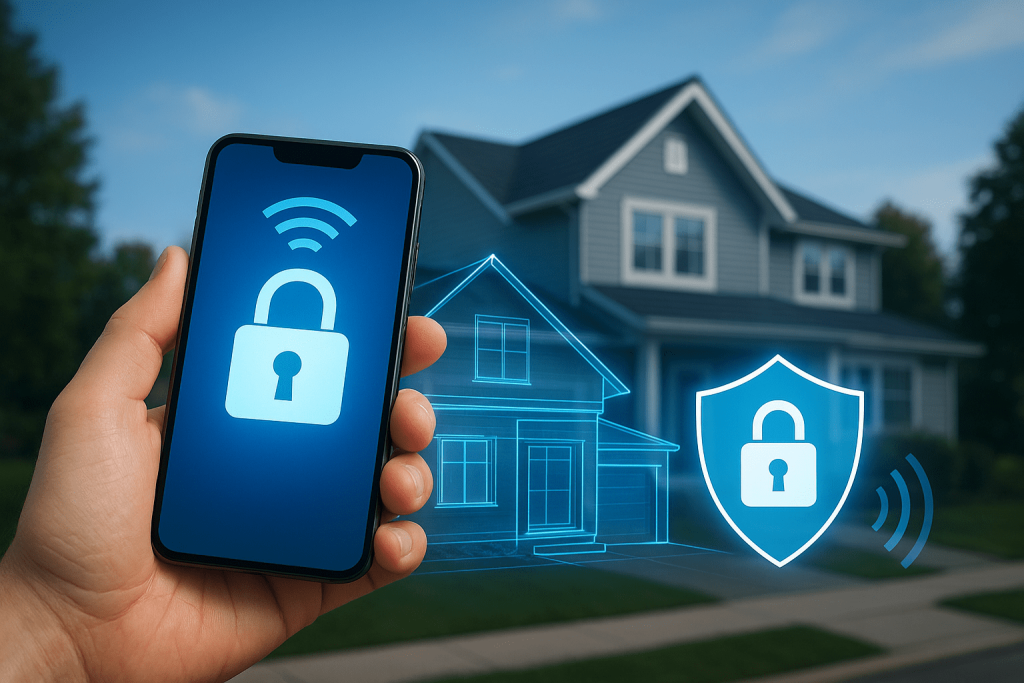Home security has evolved from simple locks and alarms into intelligent systems capable of learning, adapting, and communicating with other devices. As technology integrates deeper into daily life, the modern household is becoming not only more convenient but also more secure. The combination of artificial intelligence, automation, and real-time monitoring has made protecting one’s home more efficient and intuitive than ever before.
From Passive Protection to Intelligent Prevention
Traditional home security once relied on reactive measures. Homeowners would install alarms or cameras to respond after a breach had occurred. Today’s systems, however, take a proactive approach. With sensors, data analytics, and connected networks, these technologies detect unusual activity before it becomes a threat.
For instance, motion detection powered by AI can distinguish between harmless movements, such as pets, and potential intruders. Some systems even use predictive algorithms to identify suspicious behavior patterns over time. This shift toward prevention rather than reaction is one of the defining features of modern home security.
Moreover, the growing integration of smart assistants like Alexa and Google Home allows users to control their systems using voice commands. Locking doors, adjusting cameras, or activating alarms has become as simple as issuing a spoken request.
The Role of Connectivity and Integration
Connectivity lies at the heart of smart security. The Internet of Things (IoT) enables devices across a home to communicate seamlessly. Cameras, thermostats, lighting systems, and door locks are no longer isolated components but part of an interconnected ecosystem. This unified design gives homeowners real-time insight into their property’s safety and performance.
Beyond the convenience, integration strengthens reliability. When one system detects an anomaly, others can automatically respond. For example, if an entry sensor is triggered, lights can turn on and cameras can begin recording instantly. These automated sequences not only enhance safety but also minimize the chance of human error.
However, the benefits of connectivity come with new challenges. As homes become smarter, cybersecurity grows more important. Each connected device represents a potential entry point for digital threats, making data protection and network security as vital as physical protection itself.
Balancing Technology with Privacy
While convenience and safety are major advantages, smart home systems also raise important questions about data collection and privacy. Many devices rely on continuous monitoring, storing sensitive information such as video footage or behavioral patterns. Manufacturers must prioritize encryption and transparent data policies to ensure that user information remains protected.
For consumers, the key lies in striking a balance between accessibility and discretion. Reviewing privacy settings, regularly updating software, and choosing trusted providers are crucial steps toward maintaining both safety and confidentiality. Transparency from developers and awareness from users together form the foundation of responsible smart living.
How Smart Design Enhances Everyday Life
The design of home security has also shifted from functional to aesthetic. In the past, security equipment was bulky and visually intrusive. Today’s systems emphasize minimalism, blending with modern interiors while maintaining effectiveness. Wireless installations reduce clutter, and mobile apps allow users to manage everything from their phones, creating a seamless user experience.
This user-centered approach extends beyond aesthetics. Accessibility features now ensure that seniors and individuals with disabilities can manage their systems easily. The goal of innovation in this space is not just to enhance protection but to make safety more inclusive and intuitive for all users.
Evaluating Quality and Reliability in Modern Systems
With the rapid growth of smart home solutions, the market has become crowded with options. Homeowners often find it challenging to identify which system best fits their needs. Factors such as installation complexity, monitoring fees, customer service, and device compatibility all play a role in determining overall value.
Independent analyses and reviews are increasingly essential for guiding these choices. Vivint review, examined by Cyber News indicates how one of the leading providers approaches this evolving field. The review discusses how Vivint integrates automation with professional monitoring and advanced camera systems to deliver a streamlined, reliable experience. It also highlights how the company’s smart ecosystem adapts to user preferences, emphasizing flexibility and long-term performance. By featuring insights like these, Cyber News contributes to helping consumers understand not only product quality but also the broader landscape of digital home security.
Moving Toward a Safer Digital Home
As technology continues to merge with daily life, smart home security will remain central to the idea of modern living. The future lies in systems that protect both physical and digital spaces, ensuring that innovation serves users without compromising their privacy or safety.
Home protection is no longer about reacting to threats but anticipating them. Through intelligent integration, responsible design, and continuous innovation, the home of the future will not just be connected but secure, efficient, and designed around the people it protects.




